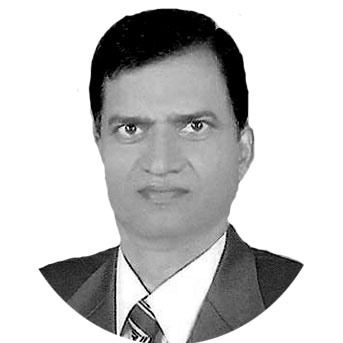Recent profile of SAARC
IN pursuance of Article 52 of the United Nations Charter relating to the formation
= of regional organizations and keeping in view the grand success of the European Union, the South Asian Association for Regional Cooperation (SAARC) was founded in December 1985, in Dhaka, as a result of the initiatives taken by the then President of Bangladesh General Irshad with seven original member states — India, Pakistan, Bangladesh, Sri Lanka, Nepal, Bhutan and the Maldives — while its 8th present member, Afghanistan, was included in 14th summit, held in April 2007.
The eight-member countries of the South Asian region don’t have similar socio-political and economic background and they may be categories into three different groups.
(1) Land-locked nations — Bhutan, Nepal and Afghanistan.
(2) Island countries — Sri Lanka and Maldives and
(3) Indo-Gangetic Plain countries — India, Pakistan and Bangladesh.
But, despite geographical differences and national, bilateral, regional tension and global groupings as well, they came together in the larger public interests.
Thus, the primary aim of the SAARC was to accelerate the process of economic and social development of the member countries in the agreed areas of cooperation.
SAARC summits: Beginning with the first summit in Dhaka, Bangladesh, on 7-8 December 1985, till date its 20 summits have been held so far, the last one in March 2020.
Nepal is the current chair of the SAARC but due to the outbreak of the pandemic, Covid-19, it was organised through video conferencing and regarded as tele-summit.
In fact, it was held after a long gap of six years when the 18th summit was held successfully in the year 2014 (26-27 November) in Kathmandu, Nepal.
The 19th summit was scheduled to be held in Islamabad on 15-16 November 2016, but due to Uri terror attack India boycotted the summit and refused to participate. Indian view was supported by all member nations except Nepal.
While India cancelled its participation, Bangladesh, Afghanistan, Bhutan, Maldives and Sri Lanka were of the opinion that regional environment was not fit for organising the summit and hence, it was postponed.
In fact, the 20th summit of SAARC countries was organised in a very extra-ordinary national, regional and global situation.
The deadly virus of Covid-19 spread in more than 225 countries without any discrimination of rich and poor, developing and developed.
It was started from China but because of fast technology and speedy means of communications, soon it spread to America and other developed nations of Europe.
At the beginning of the year 2020, in January and February, its virus entered South Asia and took the region in its purview.
The 20th summit of SAARC countries was organised at a time when a coordinated action against the virus was most required to check its spread.
In the summit India proposed several measures and common solutions to fight the disease which has killed lakhs of people all over the world.
The conference was attended by all member -nations, India, Pakistan, Bangladesh, Bhutan, Nepal, Sri Lanka, Maldives and Afghanistan.
Theme of 2020 summit: As India was fighting the virus successfully among the member countries with all the precautions required, it proposed to create a COVID-19 Emergency Fund of all SAARC nations in which they are required to make a voluntary contribution of $10 million and India became first to do so.
It proposed to prepare a rapid response team of doctors and specialists with testing kits to help the needy and also be ready to assist the neighbouring country if they required so in this phase of medical emergency.
New Delhi proposed to set up e- platforms and portals for integrated surveillance to trace the spread of virus and expressed India’s readiness to share it with other SAARC nations of the region.
Lastly, India also laid emphasis on common research programme to control the current and future epidemics and pandemics in the region.
In general, the overall Indian approach to the regions’ welfare and SAARC nations has been constructive.
Other economic activities of SAARC: The SAARC countries of the region have varied means of livelihood for their people.
The two countries — Sri Lanka and Maldives — are mostly depending on tourism business while Bhutan’s main source of income is export of hydropower to India.
In the context, India, Pakistan and Bangladesh depend mainly on agriculture.
But the economy of all SAARC countries revolves around the food for growing people, fodder for livestock, raw material and markett for industries. In common, they depend on developed countries for trade and aid.
Keeping in view the facts of real life, during the 12th summit held in Islamabad, they concluded an agreement and founded the South Asian Free Trade Area (SAFTA) on 6 January 2004.
With the aim of reducing custom duties on all traded goods to zero by 2016, SAFTA, came into force from 1 January 2006. It was proposed to reduce the duties in a phased manner.
Both India and Pakistan ratified the treaty in 2009, while the new member Afghanistan signed the protocol on 4 May 2011.
The main purpose of the Agreement is to promote competition in the area and provide equal benefits to the countries of South Asia.
For the purpose they also erected institutional mechanism and various trade liberalisation programme.
— The writer is Professor and Head, P G Department of Political Science, Bihar, India.










